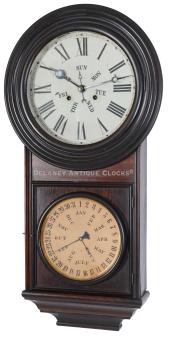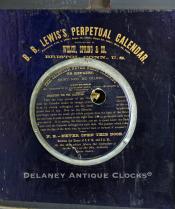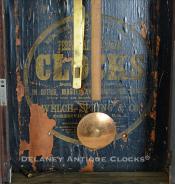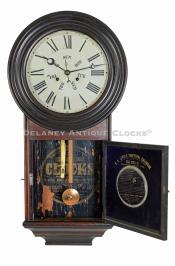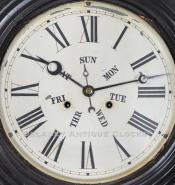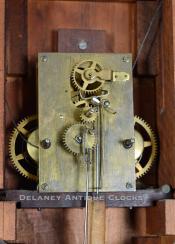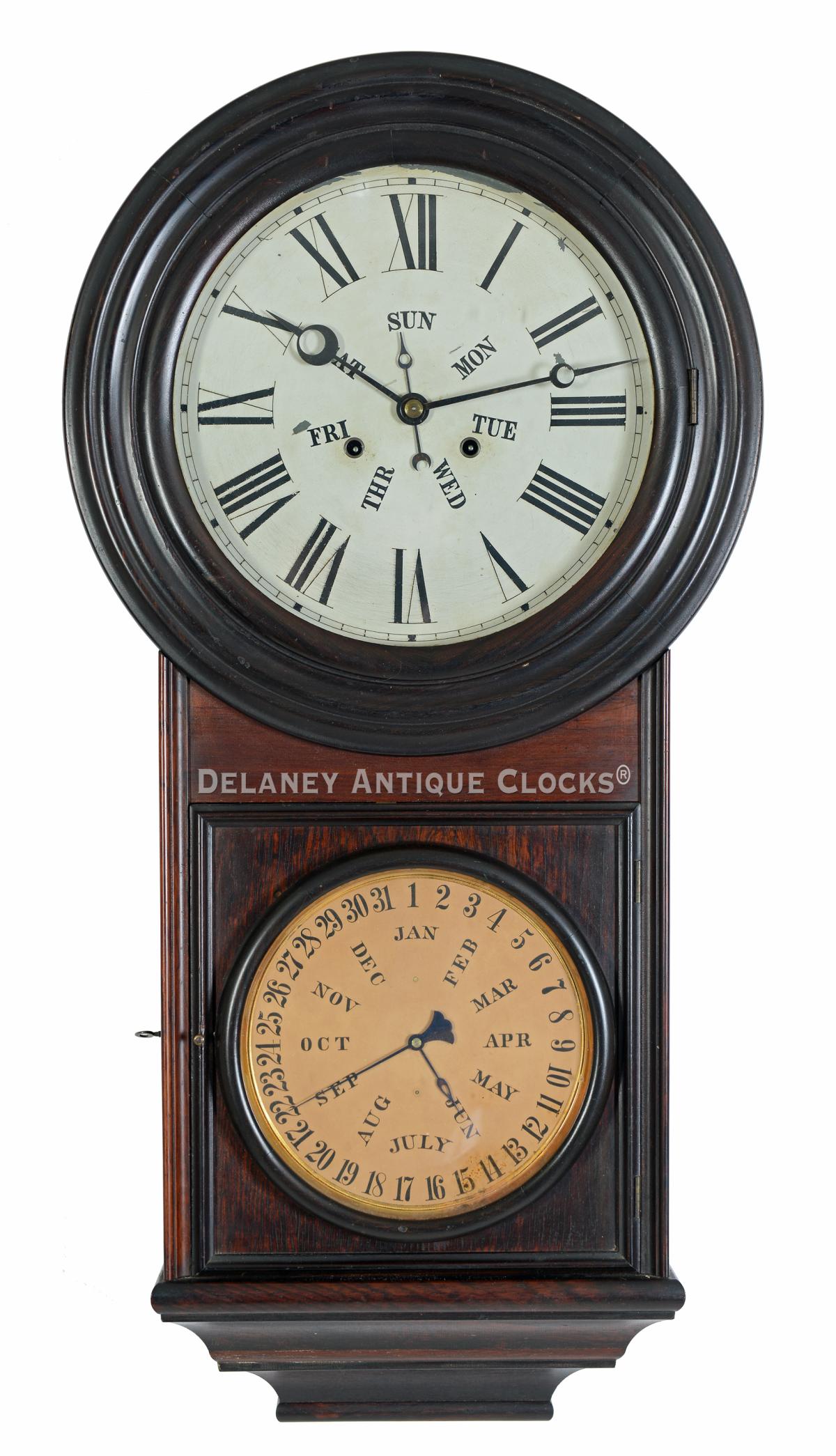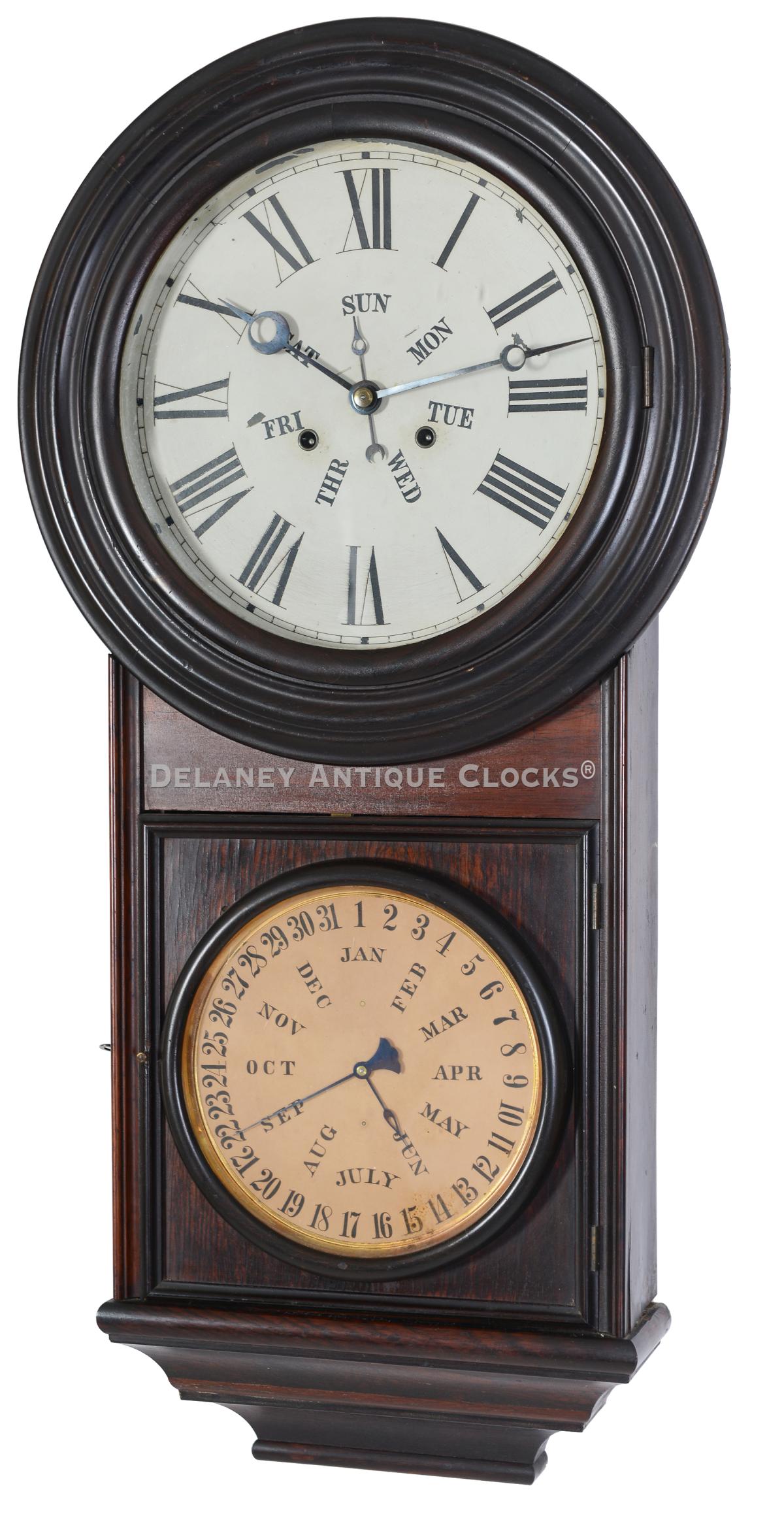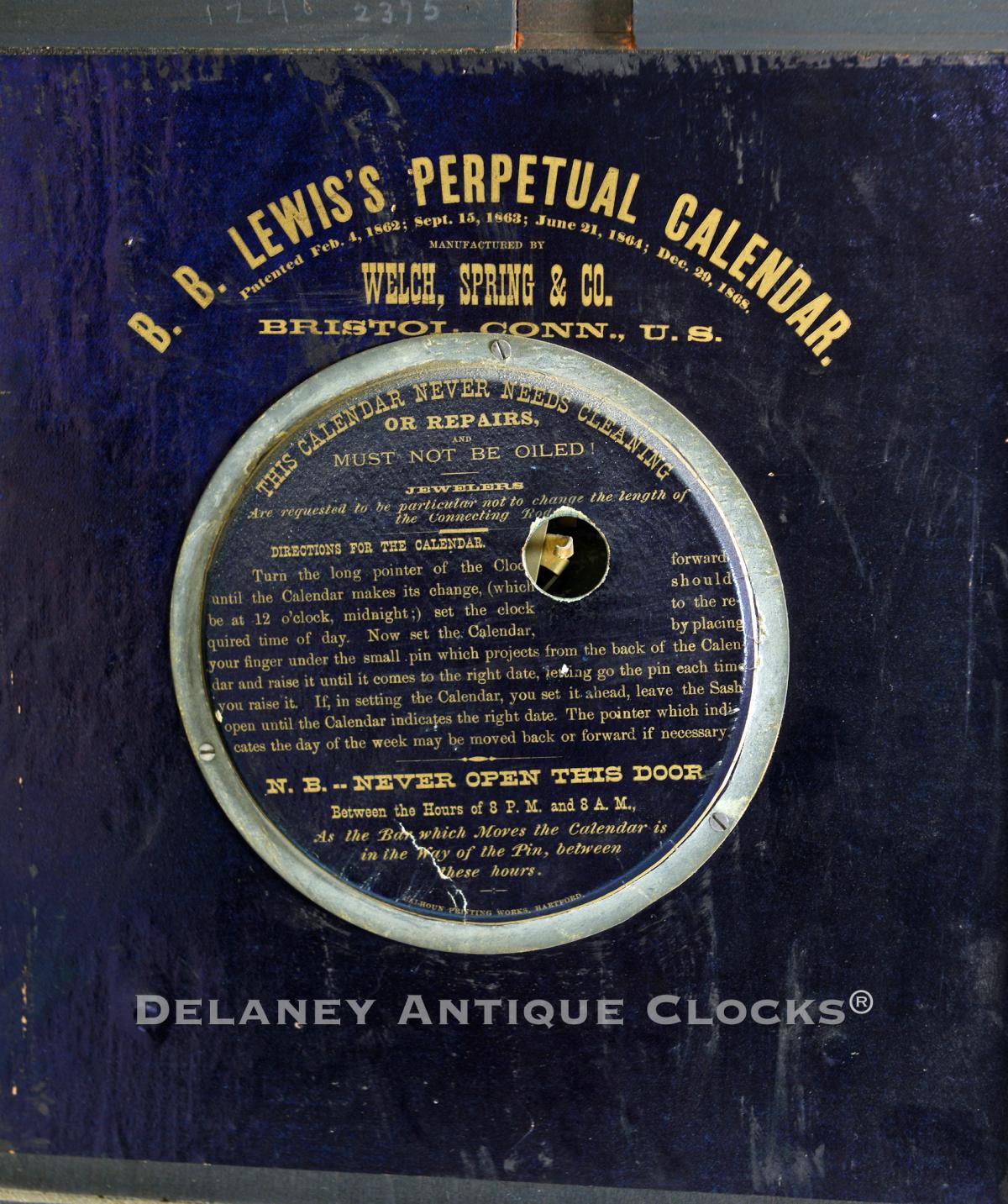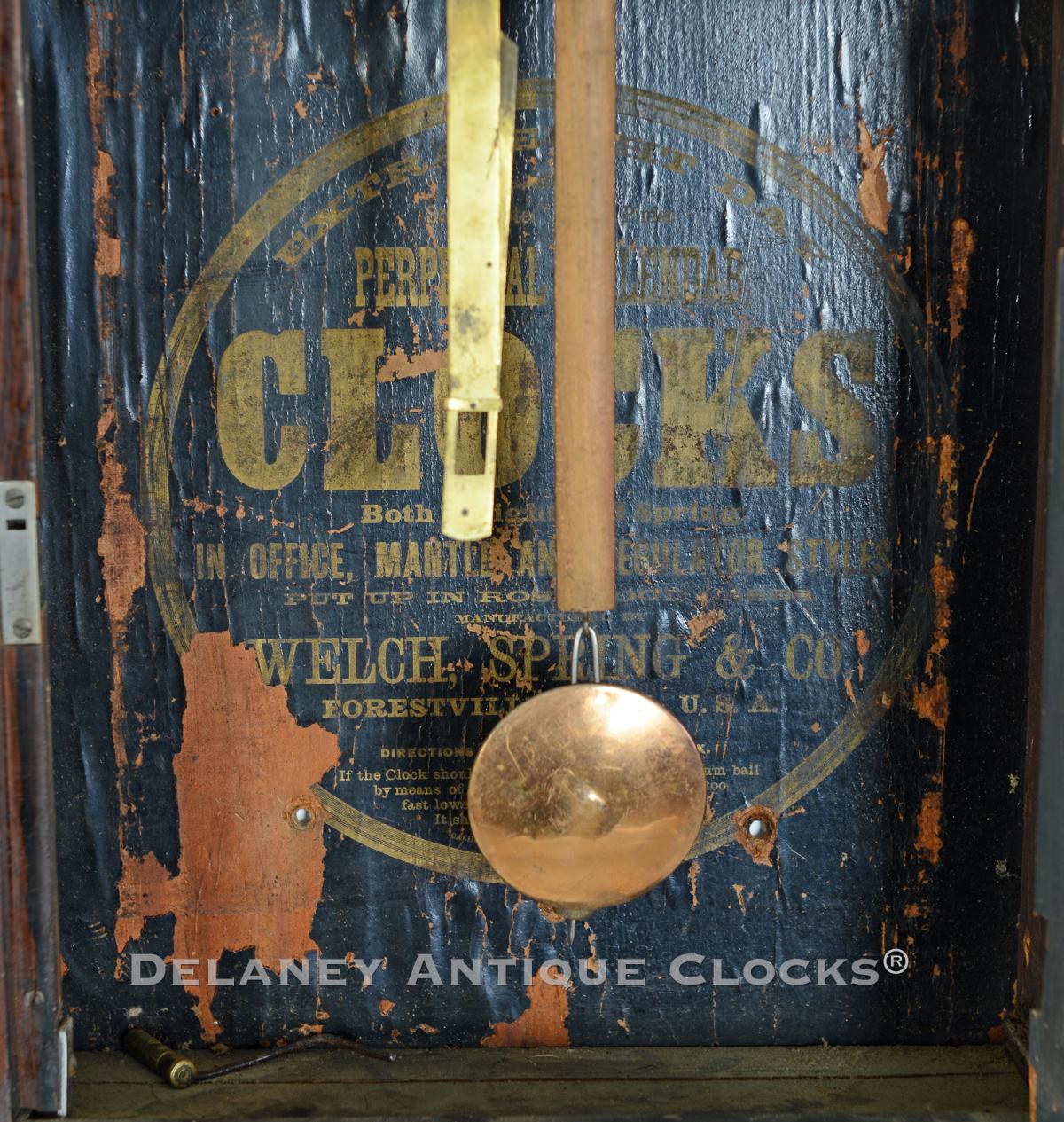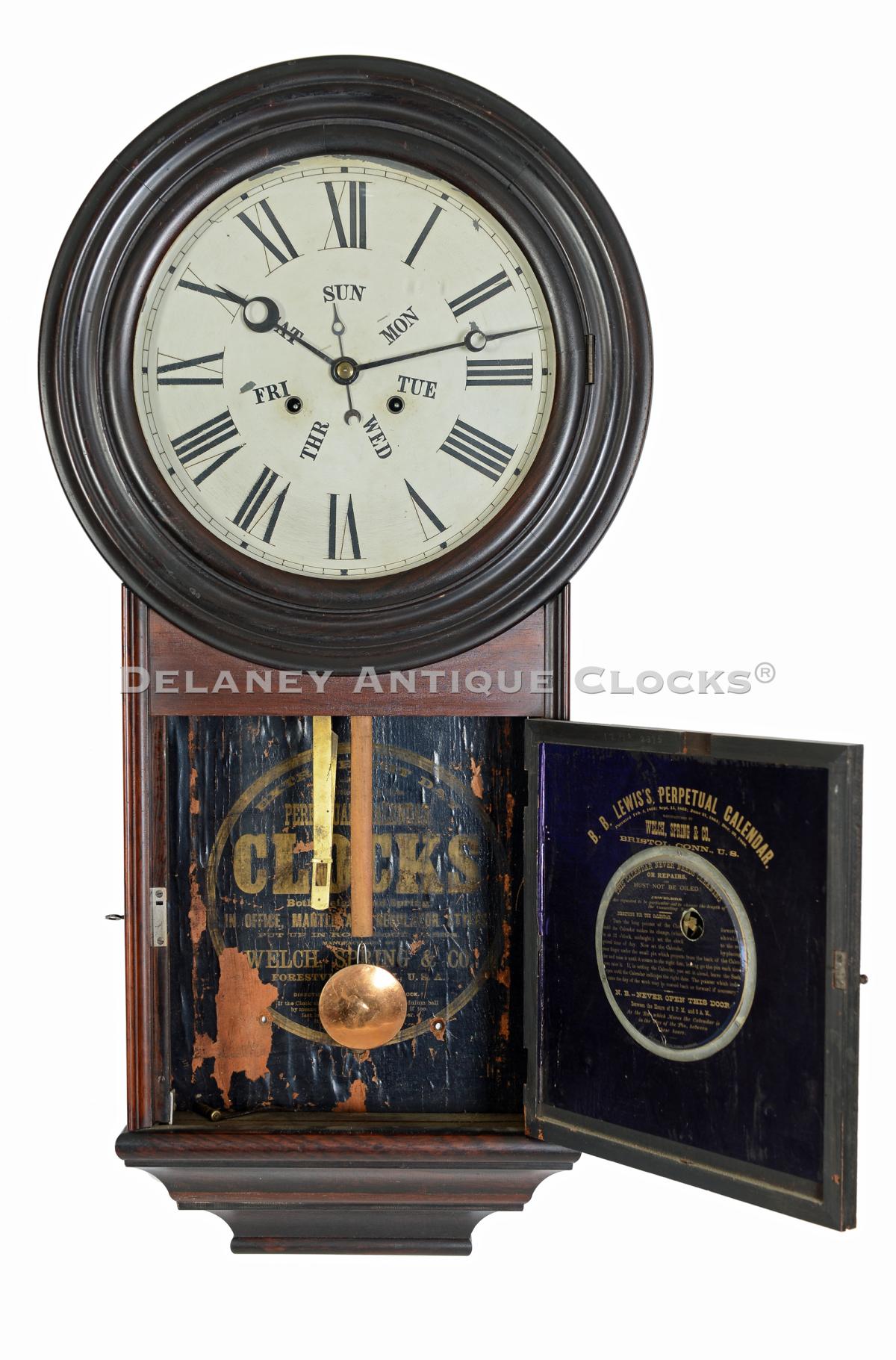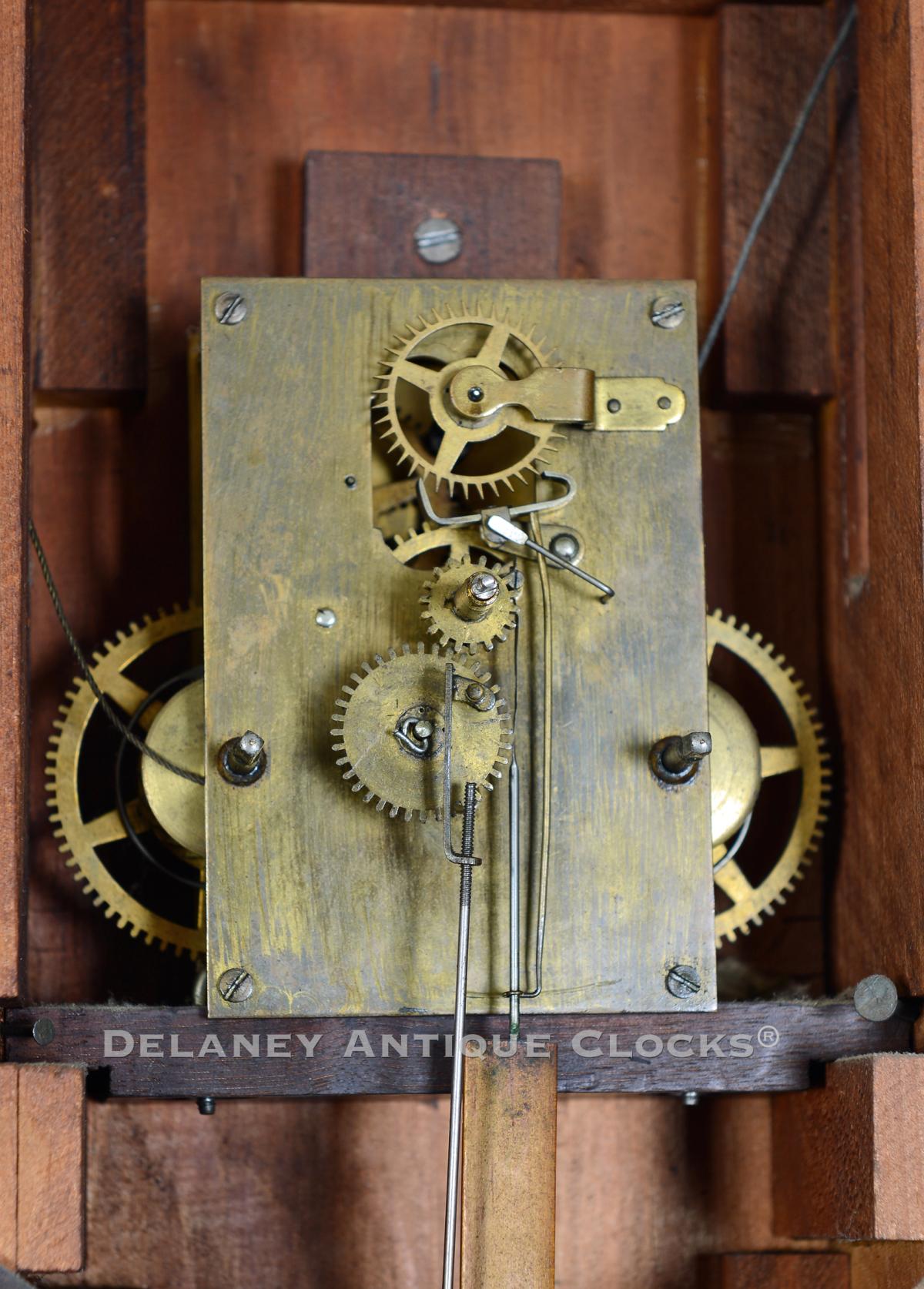Welch, Spring & Co. Round Head Calendar Regulator No. 4 wall clock. 223144.
This Welch, Spring & Co. wall clock model is cataloged as the "No. 4 Round Head Calendar." This double-dial calendar clock was made circa 1880.
Calendar clocks grew in popularity in the 1880s. The added feature of a calendar mechanism was helpful in many public and private settings. One that quickly comes to mind is in the lobby or the offices of a bank.
This clock case is constructed in rosewood, an exotic wood with excellent grain pattern and color contrast. The present mellowed finish compliments this nicely. The case is divided into two sections. Each section has a door that allows one access.
The upper section features a circular bezel that is finished with a dark stain. This complex shape is fitted with glass. It protects the 11.5-inch diameter painted time dial. The time track is formatted with a closed minute ring and large Roman-style hour numerals. There are three hands mounted on the center arbor. The minute and hour hands are an open-moon design. The third hand is designed to point out the day of the week.
Behind the dial is the timepiece movement. It has solid brass plates, steel pivoted rolling pinions, and a recoil escapement. Two weights descend inside the case to power it. The overall quality is very good. The pendulum rod is made of wood and supports the brass-faced bob. This is accessible when the lower door is opened.
The 8-inch calendar display is located here. You will notice that it shows the month and the calendar day of the month in this location. The mechanism that drives these hands was designed and patented by the B. B. Lewis firm, which contracted the rights of manufacture to Elias Burwell. This B. B. Lewis design was perpetual, meaning it will adjust automatically for the variation in the lengths of the months, and it will track and move for the leap year. This design is also easy to use in that it is self-correcting. It also requires minimal service and does not require oil. The Welch Spring & Co. started using Lewis calendars in their clocks by 1873. The label for the calendar is also intact and is pasted to the back of the lower door on the cover for the calendar. This label, which includes the patent information for the B. B. Lewis calendar mechanism, further authenticates the clock's history and features.
The manufacturer's label, which provides important information about the clock's origin and production, is in good condition and can be found on the backboard inside the lower door.
The case measures a full 34 inches in length, 16.75 inches wide, and 4.5 inches deep.
Double-dial calendar clocks fall out of fashion by 1900, certainly by 1910. This is an attractive example.
Inventory number 223144.
The Welch, Spring & Co. was formed in 1868 to produce a better quality clock than its parent label, E. N. Welch. The clocks produced incorporated high-quality wood in the construction of their cases and a higher level of detail work. As a result, Welch & Spring Clocks were often more expensively priced.
Elisha Niles Welch was born on February 7, 1809. He Had many ventures in clock-related businesses over his lifetime. He was the first Bristol Brass and Clock Co. President in 1850. He absorbed many clock businesses over a relatively short period. In 1864, he formed them into the E. N. Welch Mfg. Co, Some of those acquisitions included the Manross clock business in Forestville, J.C. Brown, John Birge, Frederick Otis, and Irenus Atkins. Welch was also a world traveler and a lover of the arts and music. He often invited guests to his house and provided them with entertainment. Several clock models were named after his talented entertainment. One popular model, the “Patti V. P.” was named after the prodigy vocalist, “Adelina Patti.” Adelina was a soprano prima donna. She is described as a beautiful woman who was wealthy, liberated, and a nonconformist. She was very popular with men.
Solomon Crosby Spring, SC, was born on January 29, 1826, in Grandby, Connecticut and died in 1906. He was the son of Thomas Spring and Candace Holcomb. SC began his career in the business of designing, manufacturing and managing clock-related activities. He worked for S. B. Terry in Terryville and later moved to Bristol. By 1858, he was in business for himself as S. C. Spring. This company was the successor to the Birge, Peck, & Company. Solomon retired from clock-making in 1895.


